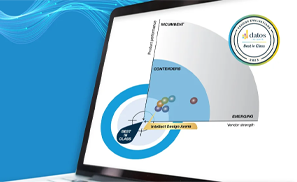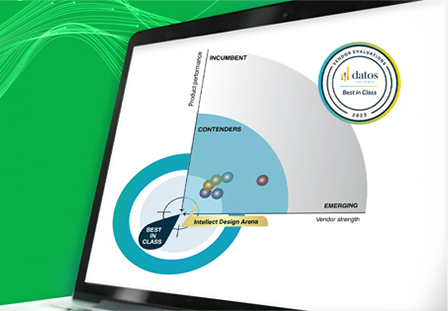- What we do
-
-
-
-
"Intellect’s continued dominance at the IBSi Sales League Table underscores its pioneering role in the fintech industry. Their commitment to innovation, exemplified by the groundbreaking eMACH.ai platform, continues to set a high benchmark in Retail Core Banking, Transaction Banking, and Lending. Intellect’s solutions are not only reshaping the present landscape but are also poised to lead the evolution of financial services globally, driving unprecedented advancements and customer-centric solutions."

Robin Amlôt
Managing Editor at IBS Intelligence
-
-
-
- Company
-
-
-
-
"Intellect’s continued dominance at the IBSi Sales League Table underscores its pioneering role in the fintech industry. Their commitment to innovation, exemplified by the groundbreaking eMACH.ai platform, continues to set a high benchmark in Retail Core Banking, Transaction Banking, and Lending. Intellect’s solutions are not only reshaping the present landscape but are also poised to lead the evolution of financial services globally, driving unprecedented advancements and customer-centric solutions."

Robin Amlôt
Managing Editor at IBS Intelligence
-
-
-
- Knowledge
-
- Our Events
- Contact Us
Africa Roundtable Event
Learn More News FlashiGTB Pulse Newsletter May 2025
Learn More News FlashHighlights of iGTB at EBAday 2025
Learn More News FlashEnhancing Corporate Payment Efficiency with SWIFT GPI Tracker powered by eMACH.ai
Learn More News FlashEmpower Digital Payments: KPI-Driven Payments with Self-Service Intelligence
Read More News FlashUnlocking Africa’s Trade Finance Potential: Driving Growth Through Digital Innovation
Read More



Secure Your Financial Transactions with iGTB's Escrow Solutions
Deposit mobilization efforts channelized via Escrow/Trust agents
Stable source of funding
Low capital requirements as per Basel III norms
Low marketing and distribution costs

Banks across the Globe are Increasingly Focused on Expanding their Deposit Base
Feature rich risk management solution that handles complex corporate cash management & liquidity structures

Contextualized and Rich Banking Experience
• Fully contextualized banking experience for escrow agent based on industry segment and use case
• Account nomenclature and transaction flows aligned to industry segment & use case
• Statement for combined master account and individual sub-account

Compose Industry Specific Escrow Products
• Compose products with industry specific nomenclature and workflows
• Layered configuration of product & regulatory rules by jurisdiction & master account

Transaction Capability
• Transactions supported via directly addressable sub-accounts or via allocation from master account
• Distinct handling of fulfillment and exception flows

High Degree of Parameterization
• Configure Interest rates at the relationship level or at a more granular level
• Compensate Escrow agent in numerous ways – Compensate independently or based on interest sharing
• Earning and tax reporting by ownership
• Set up jurisdictions and add another layer for configuring regulatory rules

Regulatory Compliance
• Support for KYC checks, withholding tax, dormancy/escheatment etc.
• Jurisdiction for regulations can be configured as per use case at country/state/custom levels
• Out-of-the box configuration for US

Interest & Earnings
• Ability to administer bank interest on escrow deposits
• Settlement of interest into account or 3rd party
• Admin fee support for Escrow Agent compliant with regulation
- Quickly configure business rules and regulatory (federal/local)
- Address the needs for different industry-specific escrow use cases
- Manage whole lifecycle of an escrow account
- Compose products with fields, labels, and other text customized for different industry segments and use cases. E.g. property management, rentals, litigation, public/government services, personal services, etc
- Define hierarchical levels that are appropriate for specific use cases (i.e. buildings for property management or case numbers for litigation)
- Manage escrow/trust accounts and transactions (interest, admin fee, tax handling, disputes)
- Automate reconciliations with manual exception handling where required
- Generate comprehensive reports of accounts and transactions
- Online audit history of all activities, additions, modifications and transaction life cycles
- Federal and State tax handling
- Escheatment handling
- Federal and local regulatory support by state (KYC, Reg D, FDIC, etc.)
- Document upload and retention capabilities, including archival and purging policy handling


- Manage escrow/trust entities (rental properties, lawsuits, etc.) without depending on the bank
- Open, edit, close escrow/trust accounts
- Transact, manage and view details (interest, document uploads, payments, etc.) on deposits to escrow/trust accounts and Release/refund of funds from escrow/trust account
- Customize hierarchical views for different use cases
- Extract date for accounts and transactions
- Manage account statements and generate comprehensive reports
- View enhanced deposit breakdowns for certain use cases (i.e. security and pet deposits for apartments)
- Toggle between different use cases within the same portal
- Use one log-in to access all of your Escrow needs


See how Global Banks #winwithiGTB Trusted by the World’s Best
Explore testimonials showcasing how iGTB empowers 60% of the world’s top banks to #winwitheMACH.ai

A market-leading global transaction banking platform, iGTB provides global coverage for its Virtual Account Management (VAM) solution across five continents and 18 countries. iGTB’s Virtual Account Management offers corporate banking clients a seamless customer journey and user experience across multiple business segments.

A market-leading global transaction banking platform, iGTB provides global coverage for its Virtual Account Management (VAM) solution across five continents and 18 countries. iGTB’s Virtual Account Management offers corporate banking clients a seamless customer journey and user experience across multiple business segments.

Composable, Contextual & Hyperscale Architecture
For High Resilience and Processing Large Volumes in Partnership with Microsoft Azure and AWS

Microservices Architecture
Loosely coupled, self contained services

API First
Build internal ecosystems with open APIs

100 % Cloud Native
Flexibility to deploy on any public cloud platforms




Pluggable Backends
Integrate any backend or application gracefully with pluggable integrations

Security
With layers of security, ready for public or private cloud deployment

No Vendor Lock In
Usage of open source components based on CNCF
Composable, Contextual & Hyperscale Architecture
For High Resilience and Processing Large Volumes in Partnership with Microsoft Azure and AWS

Microservices Architecture
Loosely coupled, self contained services

API First
Build internal ecosystems with open APIs

100 % Cloud Native
Flexibility to deploy on any public cloud platforms




Pluggable Backends
Integrate any backend or application gracefully with pluggable integrations

Security
With layers of security, ready for public or private cloud deployment

No Vendor Lock In
Usage of open source components based on CNCF
Composable, Contextual & Hyperscale Architecture
For High Resilience and Processing Large Volumes in Partnership with Microsoft Azure and AWS


Microservices Architecture
Loosely coupled, self contained services

API First
Build internal ecosystems with open APIs

100 % Cloud Native
Flexibility to deploy on any public cloud platforms


Pluggable Backends
Integrate any backend or application gracefully with pluggable integrations

Security
With layers of security, ready for public or private cloud deployment

No Vendor Lock In
Usage of open source components based on CNCF

Perspectives

iGTB named World’s Best Virtual Accounts Solution Provider 2023 by Global Finance

Virtual Accounts Management: What's new for 2023
































